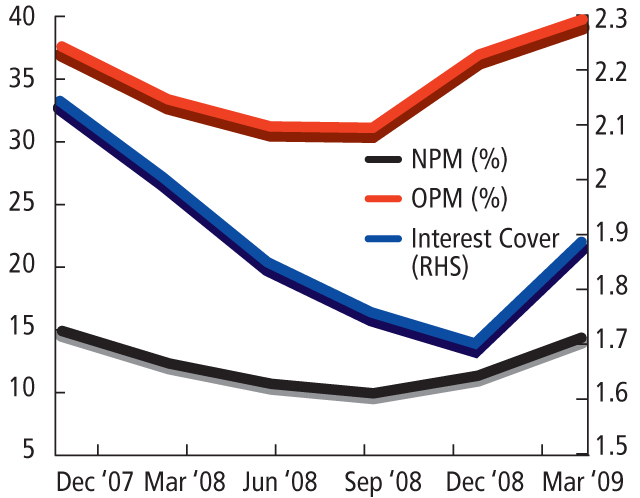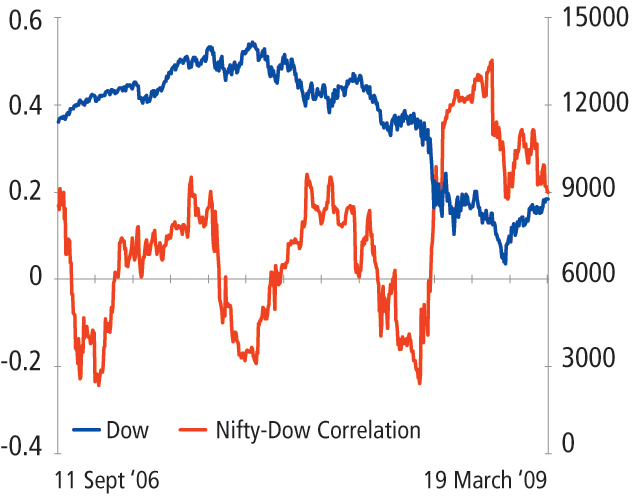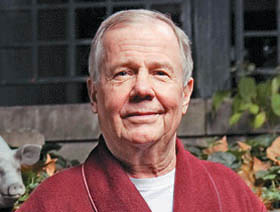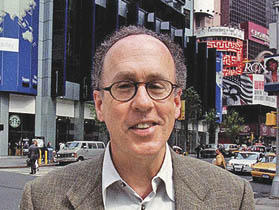
Keep The Faith: Time to Invest Again
Companies are poised to do better, bankers are opening the money spigot, consumer wallets are opening up. It's time to invest again
Jim Rogers, “investment biker” and fund manager, still prefers China over India. But wait. India has just wrested a star defector from the Chinese camp. Stephen Roach, one of the few guys who still retain a job and a reputation on Wall Street, believes that “for the first time, India looks [to be] ahead of China as the investment destination in Asia.”
What they heard was sweet. Ridham Desai, Morgan Stanley India’s head of investment, said at the conference that the 30-share BSE Sensex could rise to 19,000 by the end of 2009, provided there were no rude policy shocks. All the fund managers wanted to know just one — actually three — things. Haven’t stock prices risen sharply in the last few months making them look expensive already? Can the Indian economy absorb any relapse, if attempts by the US Fed to revive its economy fail? What if domestic demand flags and oil prices shoot up increasing input costs again?Those are vexing questions and market analysts are divided on the answers. Not good enough. A careful reading of company balance sheets and conversations with company executives are quite in order.

Falling commodity prices have brought down input costs of companies by 37 percent. This helped a 60 percent rise in their net profits. Sales had been flat between December 2008 and March 2009, but now demand is picking up
And here’s the upshot. For the first time, operating margins are creeping up after five straight quarters of decline. Global commodity prices have fallen and working capital has become cheaper. That has helped companies shave off a hefty chunk of their costs. So far, sales have remained stagnant. And indications suggest that the demand for core sectors like steel, cement and even commercial vehicles has already begun to pick up, signalling a broader economic recovery.Smart money is already moving in. After a lull of nearly six months, foreign investors are pumping money into Indian stocks. As much as $3.5 billion came in the three months to May 16, the day election results were announced. During this period, the Sensex had risen 34 percent compared with a 42 percent rise in all the emerging markets put together. After the results, India forged ahead, becoming the best performing market in Asia.
It doesn’t end here. The market has risen on the back of higher expectations of both corporate performance and a stable, growth-oriented policy of the government. Much will now depend on whether demand conditions continue to improve and that translates into higher sales growth for companies. Their earnings per share is also set to rise. The EPS for Sensex-30 companies could grow from Rs. 820 now to Rs. 950 in the year ending March 2010, Rajeev Thakkar, CEO and director of Parag Parikh Financial Advisory Services (PPFAS), says.
Then there’s one more crucial factor: Will Asia eventually decouple from the rest of the world? When the economic collapse blew a hole in the theory that Asian growth markets would stay insulated from the turmoil. Now, as the crisis abates, will a resurgent Asia pull away from the rest of the world?

Siting on a large exercise ball inside his small office on Lan Kwai Fong, a popular locality dotted with pubs in Hong Kong, Robert Howe is clear that Asia is out of the crisis. Howe, a former chief investment officer at AIG, started Akamai Asia Pacific fund, a hedge fund that invests in India, Australia and South Korea. “Asia will have nothing to do with what happens in the US henceforth,” says Howe. Last week, after India’s statistical office reported better-than-anticipated economic growth numbers, analysts have begun changing their outlook for the country and the stock market. A Citigroup Global Markets report on June 10 raised India’s GDP growth estimates to 6.8 percent for financial year 2009-10 and 7.8 percent for financial year 2010-11.
Clearly, this isn’t the time for any recklessness. The worst is not yet over. And the risks need to be carefully gauged. But the big monkey — declining consumer demand — seems to be coming off the economy’s back.
Hitting the Road
Ask P.M. Telang, the newly appointed managing director of Tata Motors about his business prospects. “It is not the lack of demand, but the sudden dearth of vehicle financing since October 2008 that affected our sales. The fact that liquidity situation has eased, has corrected that situation.” From the middle of last year, leading banks like ICICI Bank and HDFC Bank pulled the plug on vehicle financing because they felt the interest rate hikes by the Reserve Bank of India would make it tough for the truckers to pay on time.

There is a 95 percent correlation between commercial vehicle scales and the movement of Nifty. When CV sales fell in 2007-08, this was very much reflected in the index. After March 2009, CV sales have risen and so has Nifty
It is these signals on the ground that are helping build investor confidence. Retail brokerage Sharekhan spent the past one year closing down several offices it had opened across the country, particularly in small towns like Nashik and Salem. Today, day traders are slowly coming back every day to use their terminals in their offices across Mumbai. At the Morgan Stanley conference, the organisers claim that investors held 1,200 one-to-one meetings with executives of 55 companies to examine investment opportunities.
Even cash-strapped companies are now tapping into this new-found investor confidence. There has been a spree of qualified institutional placements. Firms like Unitech, Indiabulls Real Estate and Power Trading Corporation of India raised money without a sweat through QID. For Unitech, the timing couldn’t have been better. Its debt-to-equity ratio is expected to come down from 3.55 in 2007-08 to 1.9 in 2008-09.

NIFTY DECOUPLES FROM DOW ON THE UPMOVE
When the Dow index falls, it drags global markets down. But in the absence of very bad news, from the US all the other markets are on their own. This shows Asia is "decoupling" from the US on the upmove
This time, however, investors won’t have to wait that long. Costs have come down and profit margins have already improved. So far, consumer demand is holding steady. Indians have bought more TVs, bikes and cars this year than they did last year. And for sectors like steel and cement, pricing power has already improved. Says Tata Motors Pisharody: “Economic activity in some sectors will eventually drag the inactive ones like manufacturing to move. Then surely the situation will appear more normal.”
Step Out, With Care
There’s, of course, a school of thought that believes the run-up has been far too swift. Though stock markets around the world have risen, global investors are still wary of the speed at which the Sensex have risen in comparison. Sanjeev Prasad, head of equity research at Kotak Securities, belongs to that school. Prasad, rated by Asiamoney as the third best analyst for predicting the Indian market, says that based on the current earnings of companies the Sensex would find it tough to go beyond 15,000. He said that the index may fall to as low as 11,000 over the next 12 months, if there are any policy surprises. Read that as creeping inflation and a possible rate increase by the central bank in the third or fourth quarter.
For people like Rajeev Thakkar of PPFAS, these tricky situations present the best buying opportunities. As a fund manager for wealthy individuals, Thakkar bought shares of financial software company Oracle Financial at Rs. 900, when the market was still falling. At that time, he found the stock was reasonably valued and argued that the turmoil in global banking would increase the demand for automation and controls. Despite murmurs from some of his clients, Thakkar continued to buy the stock even as it continued to fall to below Rs. 500. Today, the stock trades at Rs. 1,200 and Thakkar has made a neat packet for his clients. But more importantly, he continues to hold the stock betting on its future potential. Says Thakkar, “You got to make your pick and take the plunge.”
But before taking the plunge, you’ve got to believe in two critical assumptions: that the Indian economy will continue to grow in the near term and that the growth will present smart companies an opportunity to make money and grow. If you buy into these two assumptions, it’s time to do a bit of homework and do a careful round of smart stock picking. If the market continues its bull run, you’ll be in the money. If it faces any interim hiccups, there’ll be better opportunities to buy your picks at even lower prices. You can average your cost of acquisition downwards like Thakkar did.
Savvy investors need a brand new investing playbook for these uncertain times. Now, turn the page to choose from among the best investment themes that this market has to offer.
The Skeptic

Now, if you haven’t heard of Jim Rogers, you haven’t heard of nothing. The co-founder of the Quantum Fund (along with billionaire George Soros), hit the headlines in the Seventies when his portfolio gained 4,200 percent while the S&P 500 index had advanced just 47 percent. He moved to Singapore in 1997. “If you were smart in 1807, you moved to London, if you were smart in 1907, you moved to New York, and if you’re smart in 2007, you move to Asia,” he reportedly said.
World View
- The world consumes more than it produces. So, agriculture is a good bet in the long run.
- There’s a currency crisis waiting to happen — not sure which one though — but most probably European or American.
- Invest in Sri Lanka. A 30-year war is just over. The country needs to be rebuilt. That spells opportunity.
- Bullish on the country’s tourism, infrastructure and defence.
- Uncomfortable with the government. The Congress has always over promised and under delivered. If it does keep its promise this time around, India could be the greatest development story for the next 20 years
Stephen Roach The Convert

One of the most influential economists on Wall Street, Roach is MD and chief economist of Morgan Stanley. His gloomy predictions earned him the sobriquet “Perennial Bear”. In 2004, he predicted an Economic Armageddon. His outlook stemmed from the fact that debt in the US was more than 50 percent of its GDP; it continues to remain there till date.
World View
- The US is dead as a consumer nation. No country can take its place — not even India or China.
- 75 percent of the world’s economies are contracting and will limit global growth rates.
- Therefore, the current equity rally across the world isn’t justified.
- For the first time, Roach says he likes India over China because India isn’t as dependent on exports as China is.
- Domestic savings as a percentage of GDP is at 37 percent. This is among the highest in the world and makes the average Indian consumer a formidable creature.
- There is enough evidence to indicate FDI into the country will accelerate.
- Likes the fact that the Congress is in power. He believes it gives India the stability it needs.
A must read: 20 Stocks You Must Own
(This story appears in the 03 July, 2009 issue of Forbes India. To visit our Archives, click here.)
-
 Shekhar
ShekharThe input costs of most of the base materials are rising and possibility of further going up. I don't see those are going down in near future and margins will be under tremendous pressure
on Jul 2, 2009














